Soft Tailoring, Genderless Silhouettes Mark Shift at Paris Men’s Trade Shows

PARIS — With Pharrell Williams’ celebrity extravaganza at Louis Vuitton, the Fête de la Musique and the Pride parade, Paris was in feel-good mode during the recent men’s collections and the trade shows were no exception, with buyers and brands largely upbeat for spring 2024.
Tranoï took place at the Gaïté Lyrique, a former concert hall on the edge of the Marais that just reopened as a cultural center aiming to bridge creative industries, where the trade show has signed for three seasons through 2024, when pressure on venues will be particularly tight due to the Paris Olympics.
More from WWD
With 50 exhibitors this session, the space has the possibility of expanding further for future editions, said Tranoï chief executive officer Boris Provost. As well as a runway show for South Korean designers under the trade show’s partnership with Seoul Fashion Week — a first during men’s — the show was also the venue for the first Paris presentation from Bed J.W. Ford on June 25.
“We want to establish the Gaïté Lyrique as a place for fashion events, during and outside fashion week,” Provost explained.
As the show continues to shift toward an edgier offer during men’s collections, it highlighted the new wave of designers offering genderless collections and pieces more traditionally associated with the “feminine” wardrobe.
This was the subject of a conference held on the first day of the show, where consulting firm Leherpeur presented the findings of a study into new consumption habits, noticeably among Gen Z consumers. “It’s a true mutation,” said Leherpeur Paris director of strategy and forecasting Sabrina Pelissier. “Wearing items traditionally associated with the women’s wardrobe is no longer a subject of gender definition.”
“It’s very important today to be mixed, we don’t have barriers,” said designer Armine Ohanyan, who habitually shows at Tranoï during women’s and was presenting a genderless collection for the first time. “I have many male buyers,” she said — confirming that younger generations do not stand on ceremony when it comes to which way a shirt fastens, for example.
As on the runways, there were skirts aplenty on show for men, but in a more understated register that retailers were looking to tap into the trend — via an expanded color palette, enhanced embellishment and softened-up styling that offered something fresh to the menswear wardrobe.
Bruno and Marie-Jo Serer, with three Phenomene stores in Aix-en-Provence and Sanary-sur-Mer in the south of France, praised the evolution at Tranoï. “We used to come to Tranoï often, but the way it had evolved did not suit our customer,” said Bruno Serer. “We’re finding the offer a lot more interesting again; it’s wonderful to see a return of creativity.”
At the show, there was also a new collaboration with Berlin Showroom and a space with five designers from Portugal under a partnership with Portugal Fashion, and two brands from China attending thanks to a memorandum of understanding signed with the China Fashion Association.
Over at Man, known for its commercial proposition and more contemporary positioning, there was a marked shift toward more structured silhouettes and less streetwear. “People have had enough of logos; there’s definitely a return to dressier styles,” said Man/Woman cofounder and director Antoine Floch.
Buyers praised the shift, as well as a muted yet colorful palette and new fabrications and embellishments injecting something fresh into men’s wardrobes. “We’re stepping away from neutrals. All these dusty pastel colors are very commercial; it signals summer but it’s not too loud,” said Arnault Castel, owner of the Kapok chain in Hong Kong, shopping at Man. “I feel we are stepping out of purely outdoorsy looks and looking for something dressier.”
For buyers either from the U.S. or with currencies pegged to the U.S. dollar — as is the Hong Kong dollar — it was a good time for shopping from European brands, he said. With Hong Kong, like Japan, one of the last to emerge from the restrictions of the pandemic, “we’re in a honeymoon period; we need to be careful not to overbuy,” he said.
For Japanese exhibitors — who made a major return at Man, with a show-in-show from trade event Jumbo bringing a selection of brands for the first time since before the pandemic — the weak yen was also offering advantageous trading conditions, said Masato Tsuchiya, an agent representing four brands including his own collection Sillage, which had seen strong demand.
“Everybody likes Japanese products, because they know the quality,” said Tsuchiya. “People are not stressed about the prices. Even with taxes, the prices are reasonable because the yen is weak.”
Nevertheless, cash flow represents possibly the biggest challenge for independent brands and retailers alike at the moment, said Floch. This, however, was actually favoring emerging and independent designers showing in Paris, he said.
“People are really paying attention to their travel expenses, meaning they are focusing on spending a week in Paris, instead of traveling to all the other cities too,” said Floch.
HIGHLIGHTS AT THE PARIS TRADE SHOWS
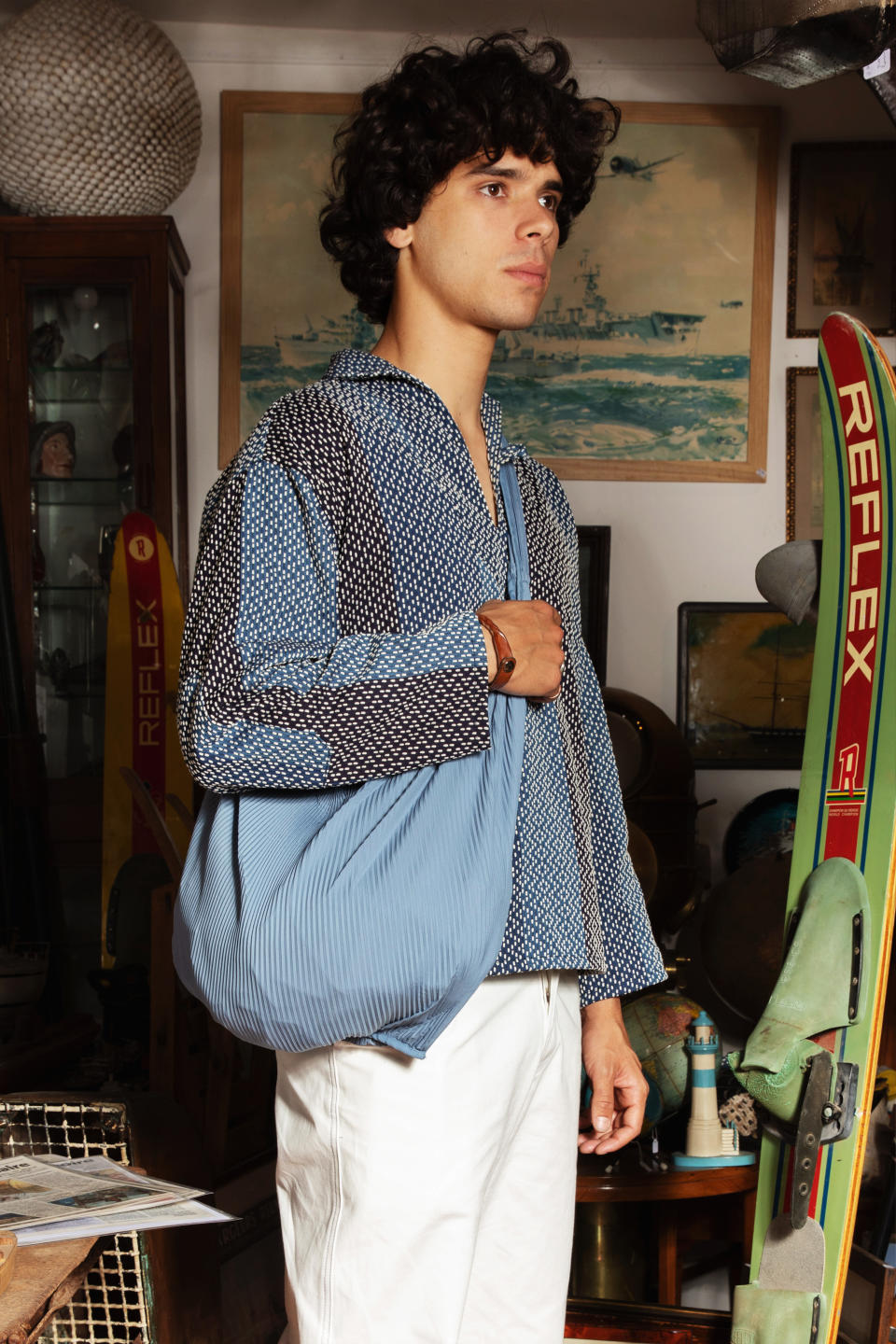
ErEvan
Showing at: Tranoï
Story: Buzzy young French brand ErEvan, hailing from Saint-Tropez and founded by Evan Morello in 2021, has carved its place with its relaxed wardrobe built around updated vintage military and sailing silhouettes, made with high-end fabrics sourced in Europe and Japan. After establishing a footprint through its own stores — first in Saint-Tropez, where it attracts a strong international clientele, and more recently in Paris — the label is opening up to wholesale. Initially centered on men’s cuts designed to be unisex, the label also unveiled its first capsule of specific women’s silhouettes.
Core price range: 180 to 500 euros (retail)
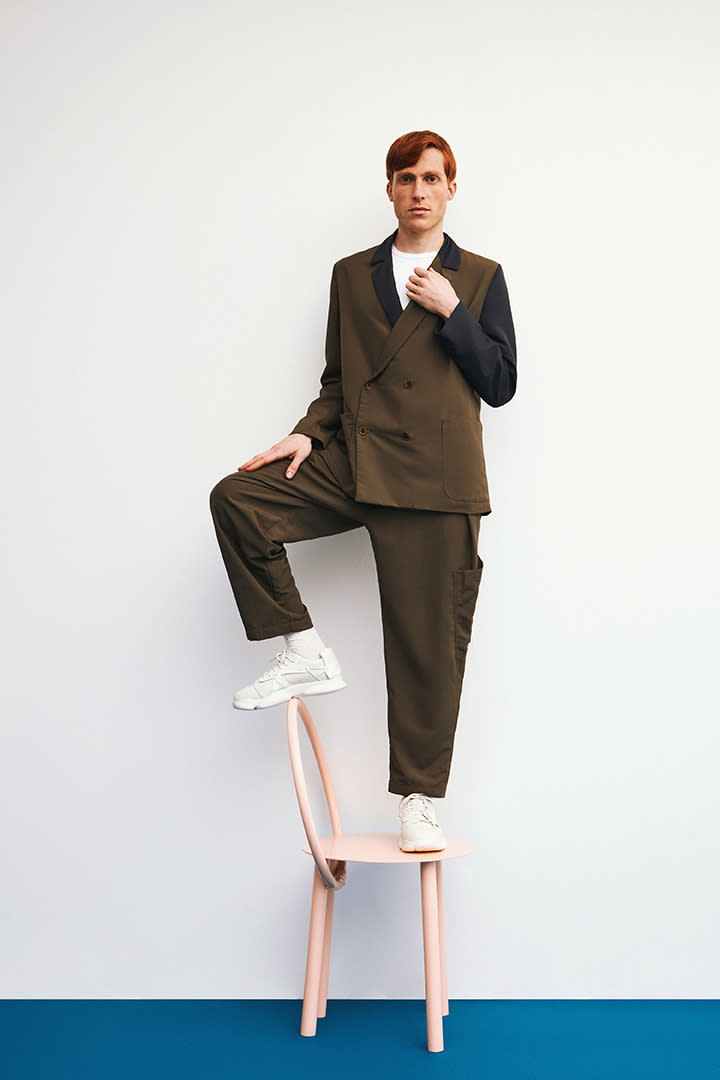
Mo Studio
Showing at: Tranoï
Story: Chilean designer Magdalena Olazábal created her genderless label in 1997, manufacturing her own fabrics, with 60 percent made with recycled remnants and clothing. Everything in the range is one size and designed to offer a versatility of ways to wear, with distinctive design twists that add interest to the silhouette.
Price range: 100 to 400 euros (retail)
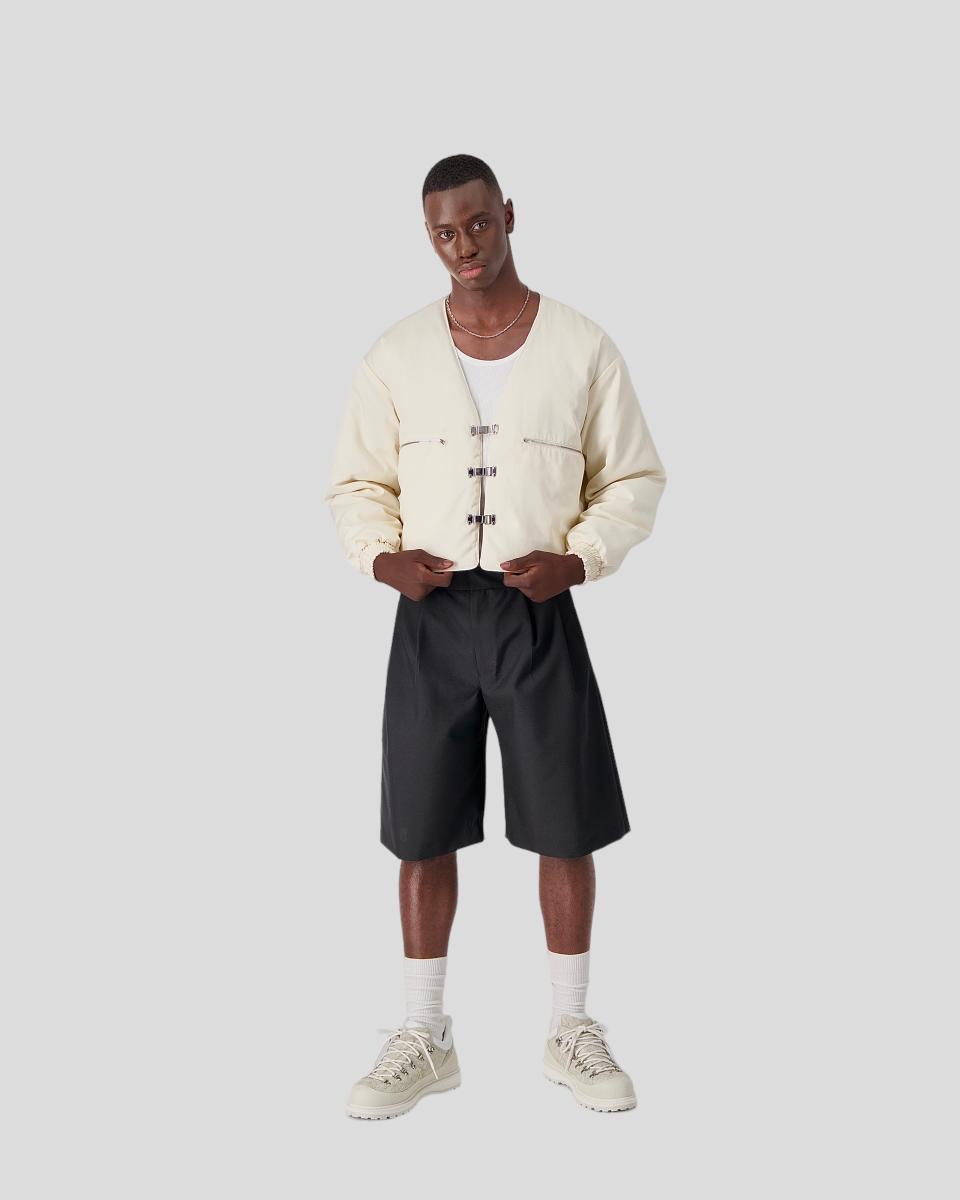
Ekivoc
Showing at: Tranoï
Story: A product manager at A.P.C., two years ago Baptiste Guerin launched his own brand Ekivoc, offering an elegant bridge between sportswear and tailoring and local sourcing. Highlights in his sharp yet simple lineup included smartened up high-waist skater shorts and gabardine jackets with distinctive metallic hardware, as well as T-shirts crafted from French-knit fabric.
Price range: 150 to 700 euros (retail)
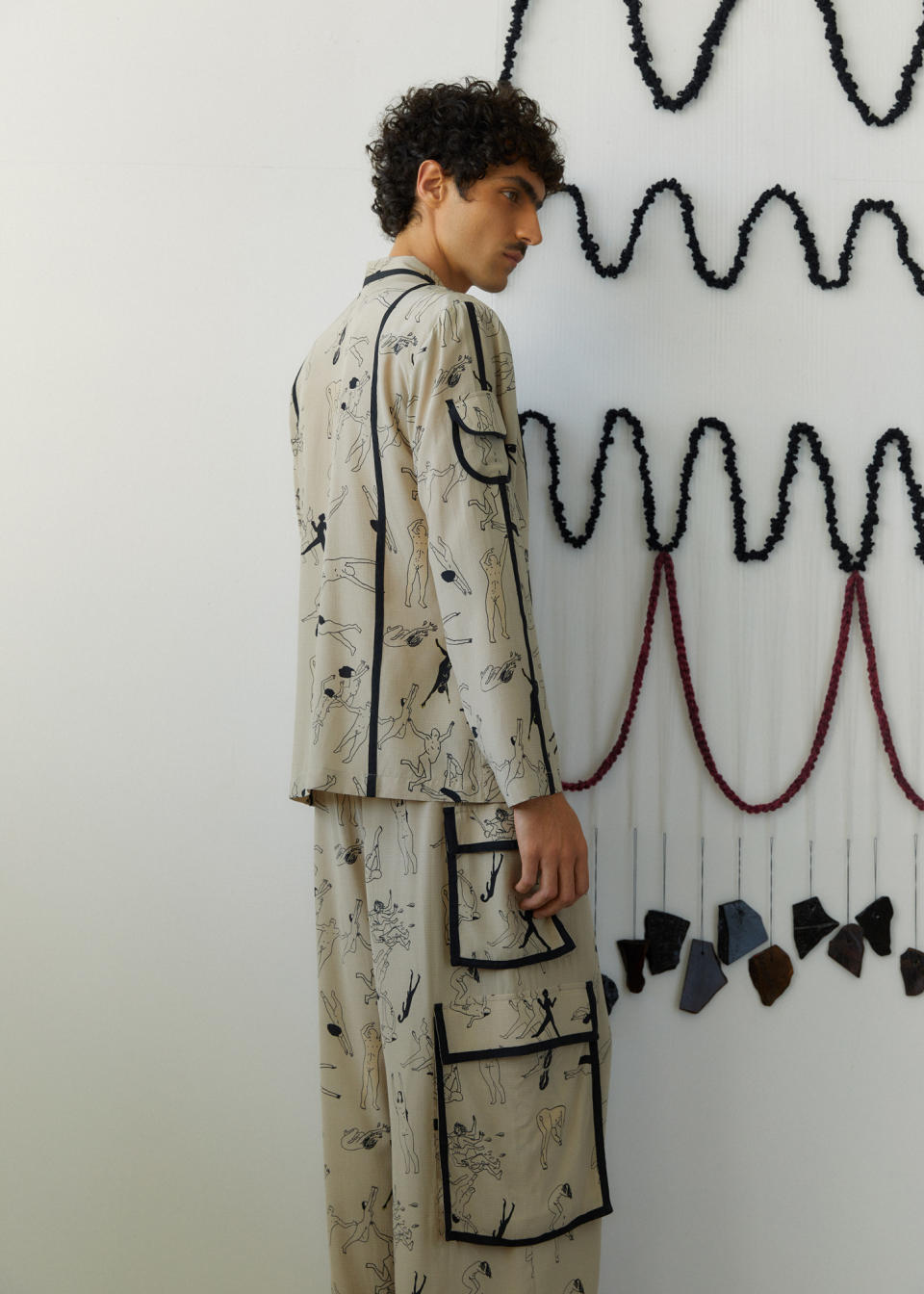
Handred
Showing at: Tranoï
Story: Rio de Janeiro-based André Namitala created his 11-year-old brand when he was just 19, offering soft, loose tailoring with an artistic twist in high-end fabrics like silk, linen and cashmere. The label has a strong following in Brazil, including its own retail. Internationally, the brand is currently stocked by Farfetch and is now opening up to international wholesale. The spring 2024 collection includes a collaboration with multimedia artist Vivian Caccuri, with dancing silhouettes moving between sound waves to form an abstract print on suiting and windchimes adorning the hem of a statement vest.
Core price range: 370 to 800 euros (retail)
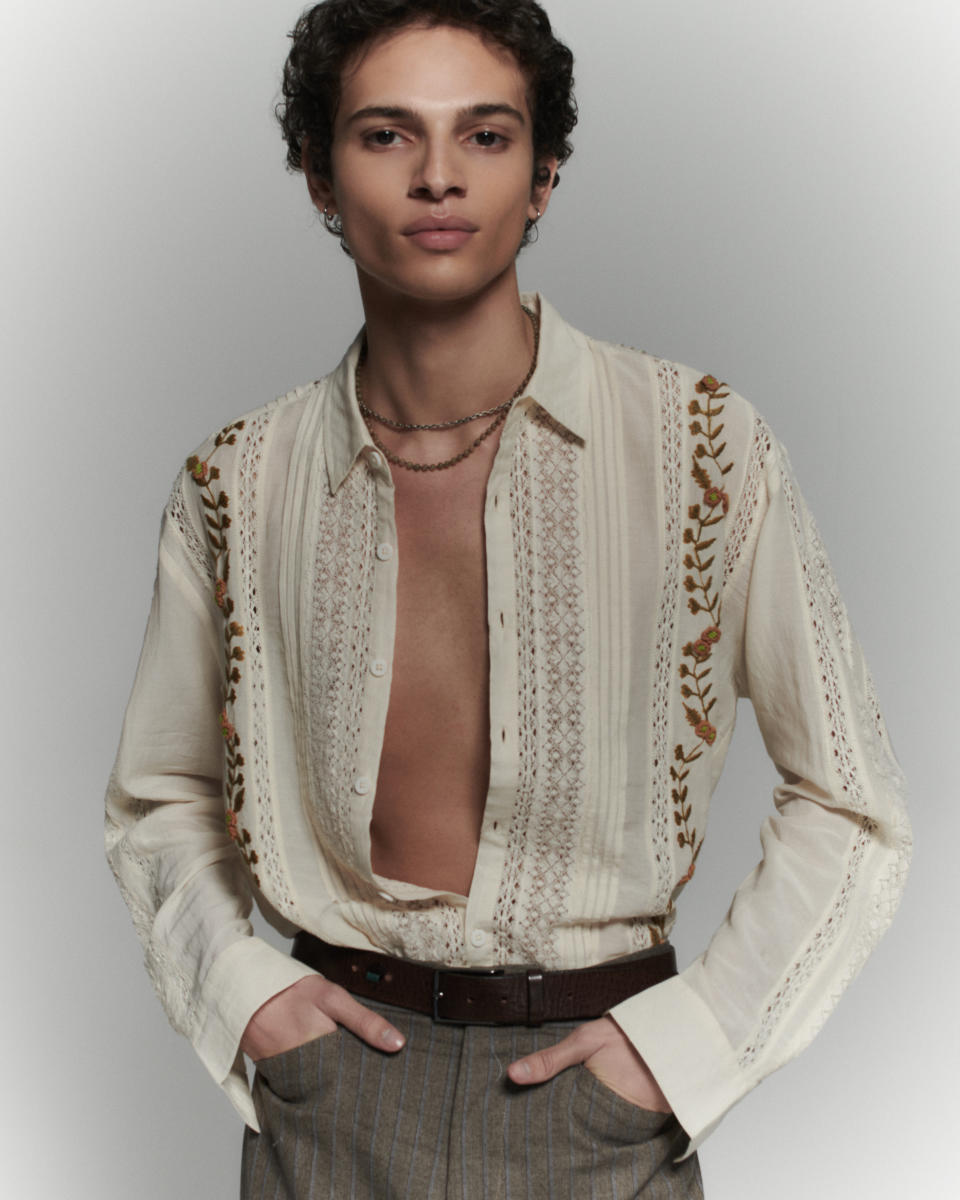
Baziszt
Showing at: Tranoï
Story: Always an avid drawer, self-taught designer Zied Ben Amor worked as a statistician before deciding to create his own brand in 2021, focusing on embellished shirts in high-end fabrics like silk, hemp, bamboo and organic cotton, embroidered or painted by hand. Launched in 2021, the brand has cultivated something of a celebrity following in France and is stocked at L’Eclaireur and Boys Don’t Cry. “I wanted to break the rules,” said Ben Amor. “I was fed up with the dress codes of the banking world.” He decided to center his brand on men’s — although it also has female customers — because he felt that he could offer something new in the space. “In women’s, everything has been said already, and the term ‘unisex’ is so overused.”
Price range: 350 to 650 euros (retail)
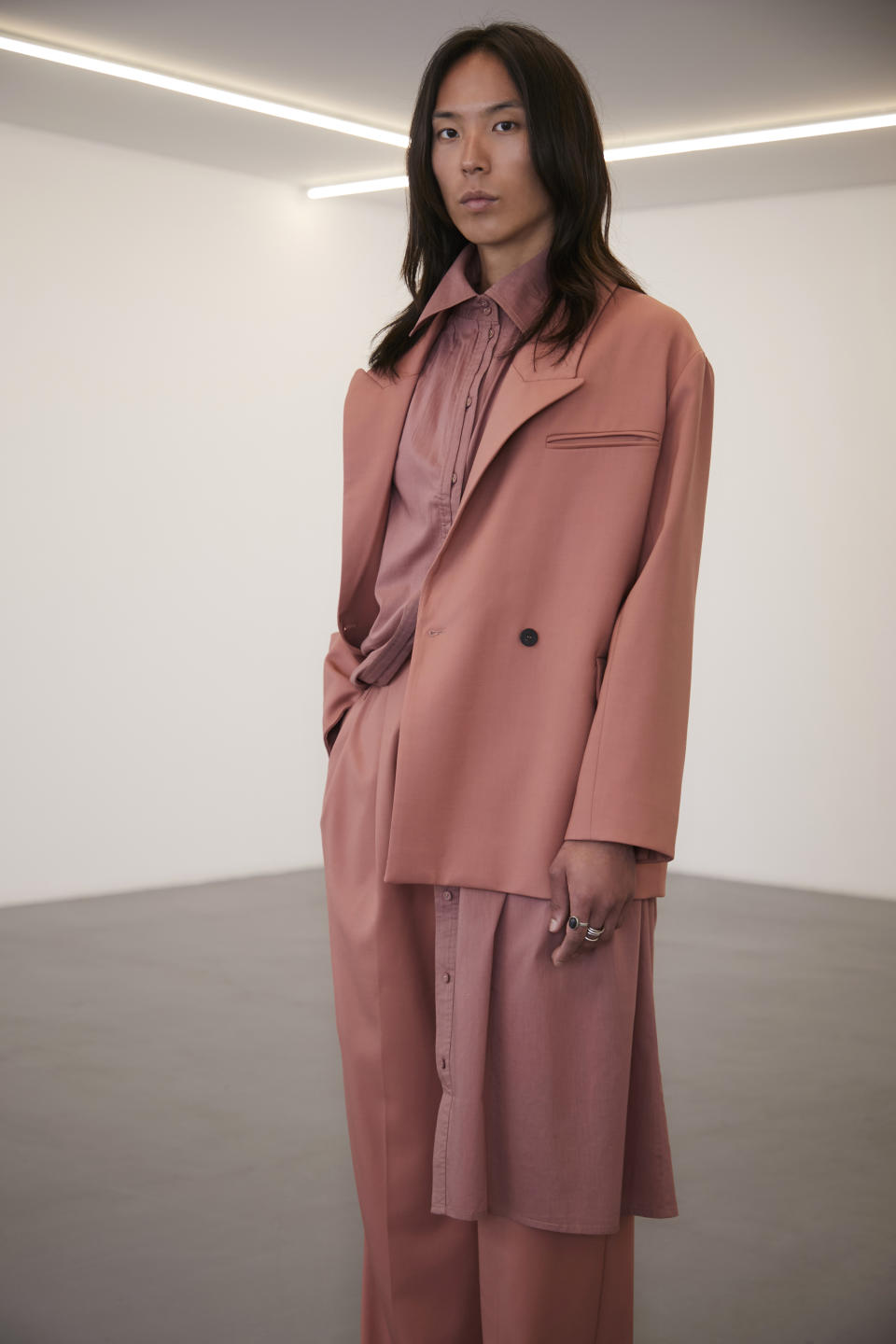
Value
Showing at: Tranoï
Story: French designer Valentine Gauthier, who has carved a space in womenswear with her masculine-inspired silhouettes, is taking a turn in the menswear universe with the launch of Value. “We want to break down the notion of gender to give men more freedom,” said the designer, who teamed with photographer Hervé Coutin to create the new label. “Women have long dipped into the men’s wardrobe; there is no reason for the opposite not to be the case. The idea is to offer more creativity.” With softened-up tailored silhouettes and a warm color palette, around 80 percent of production is done in the Paris region with a focus on high-end fabrics and rigorous sourcing.
Price range: 280 to 730 euros (retail)
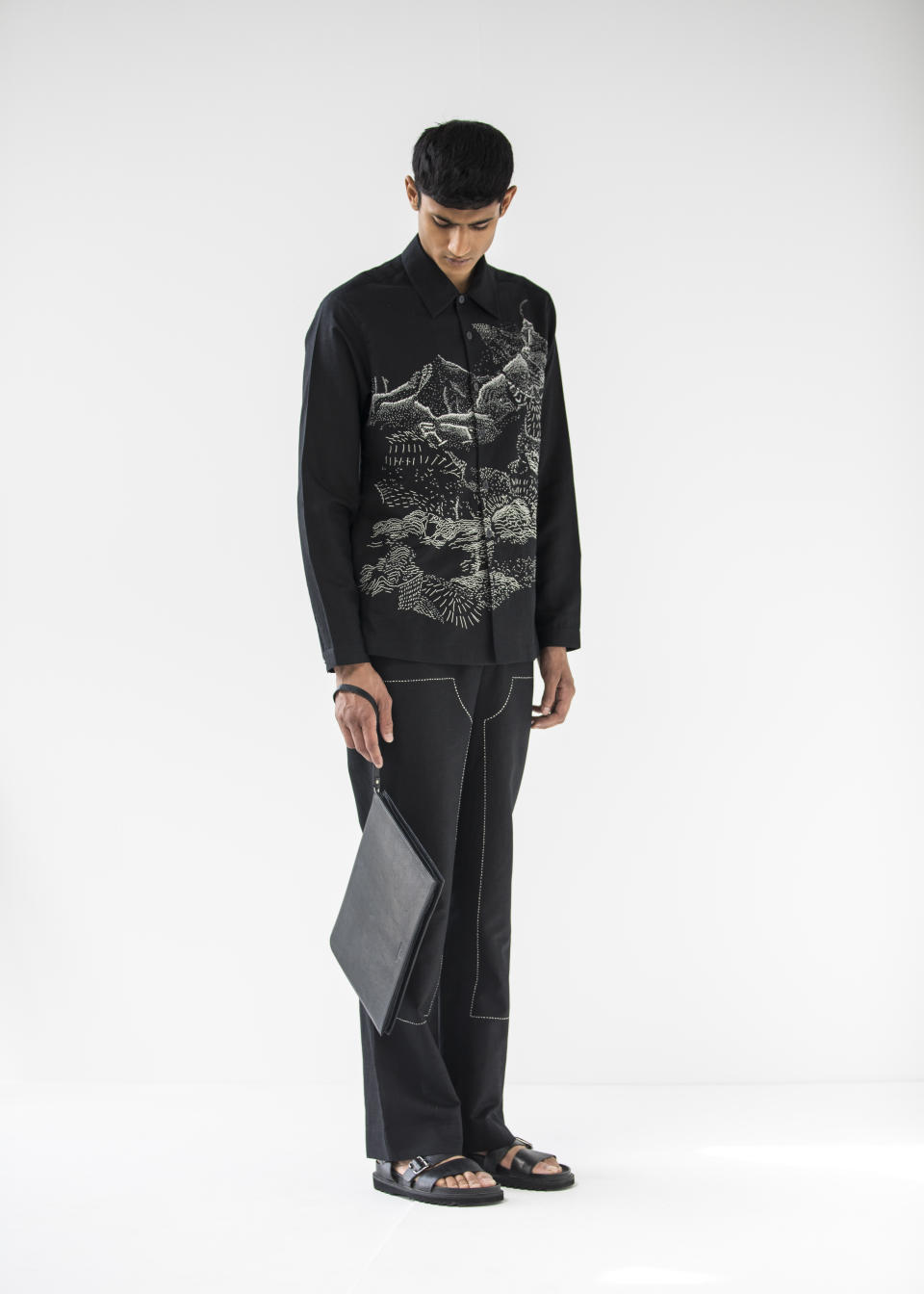
Countrymade
Showing at: Tranoï
Story: Hailing from India, Sushant Abrol cut his teeth under designers including couturier Rohit Bal, and with his Countrymade label, launched in 2019, made GQ’s 2023 list of India’s most influential people under 35. Countrymade is inspired by the loss of his brother, who was in the armed forces, in a plane crash, and he combines military references with a vocation to update and preserve heritage techniques like embroidery and batik. His sharply tailored silhouettes present graphic motifs like barren landscapes, train tracks and barbed wire inspired by the landscape of no man’s land, embroideries evoking a postcard sent home, and prints and wrinkles representing the ravages of war on mental health. Sustainability is a key aspect of his ethos, supporting women in the community by offering them work and using matka silk, made only from pierced cocoons, meaning no silkworms are killed.
Price range: 120 to 650 euros (retail).
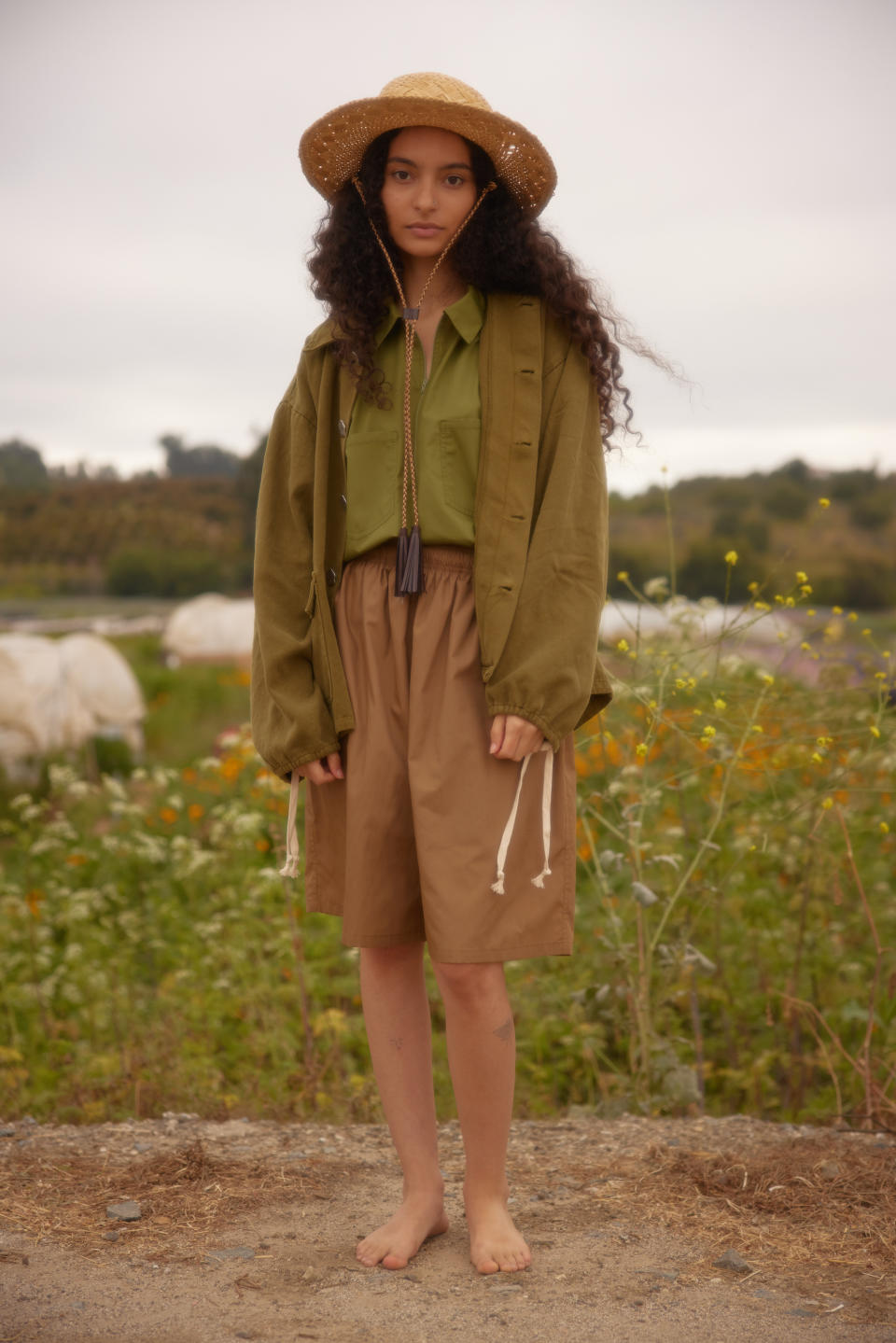
Monostereo
Showing at: Man
Story: Vintage-inspired Monostereo, based in Los Angeles,is the brainchild of Mowgli Surf cofounder Alex Seastrom and former Urban Outfitters executive Colby Black. Presenting their third season — for the first time internationally — they offer a unisex range with a lived-in feel and distinctive neo-hippie vibes. The brand works out of hand-painted garment specialist L.A. Air Line’s Los Angeles factory.
Price range: $65 to $595 (retail)
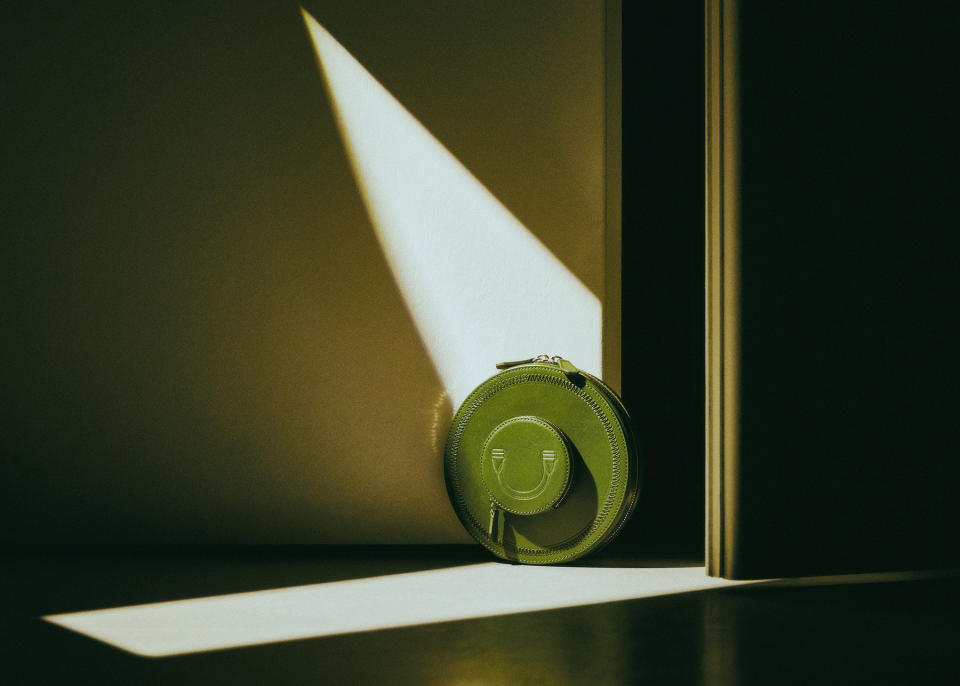
Nosakhari
Showing at: Man
Story: With a factory based in London’s Hackney neighborhood, designer Nosakhari Osadolor’s love for accessories as a means to express individual style was the driving force to create his high-end leather goods label 10 years ago. Passionate about craft and preserving ancestral techniques, the label also offers kits so customers can make their own accessories. Highlights in the spring 2024 collection included a crossbody bag in forest green calfskin and the brand’s signature Djembe pouches.
Price range: 295 to 1,100 pounds (retail)
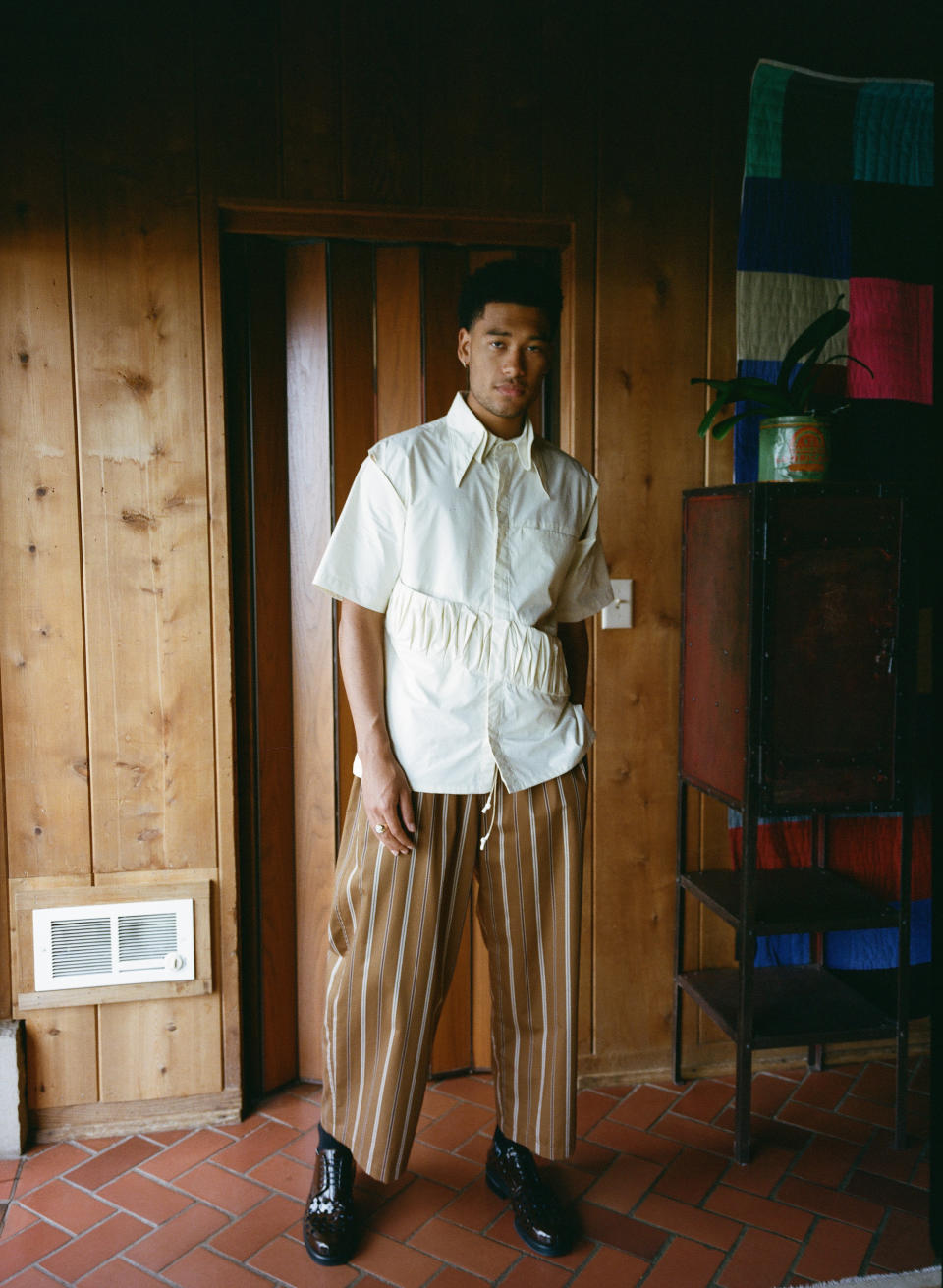
Guillermo Bravo
Showing at: Man
Story: Based out of Seattle, Paris first-timer Luis Velez centers on playful patchwork tailoring with fun details like detachable magnetic pockets inspired by the Rionegro area of Colombia, where he grew up. After studying jazz and soul music, it was a passion for sneakers that initially pushed Velez to re-train, firstly in footwear design, then in apparel, before launching his brand, named for his parents and now in its second season.
Price range: $75 to $400 (retail)
Best of WWD

